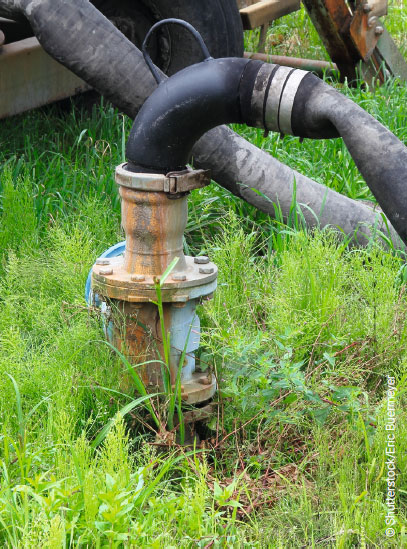
Growing cities and agricultural intensification are increasingly depleting both surface water and aquifers. Wetlands are being drained, and many rivers, lakes and ponds are vanishing in waterscarce regions. Land-use changes result in surface hardening of natural areas, reducing infiltration and aquifer recharge, while increasing water run-off and pollution. Land degradation and deforestation also cause increased run-off, carrying eroded sediment through rivers into oceans (see Section 8.4.2). In areas experiencing large-scale deforestation, the likelihood of precipitation events is decreasing and soil erosion is increasing (Birkinshaw et al. 2011; Ellison, Futter and Bishop 2012).
Agriculture is responsible for an average 70 per cent of global water withdrawals (UN-Water 2017). Industrial processes and energy generation increasingly compete with agriculture and cities for available water. However, much energy water demand is for non-consumptive uses (e.g. cooling) (UNEP 2012a).
The interconnections between water, energy security and food security have identified tensions and trade-offs between them requiring careful scrutiny and consideration (Rosengrant et al. 2009). This nexus becomes especially important when considering drivers such as urbanization, population, economic growth, technology and innovation (Bleischwitz et al. 2018).